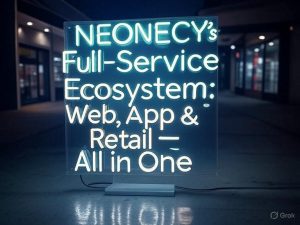As the digital landscape evolves, businesses must choose the right technological framework to thrive. The debate of Web3 vs Web2 is at the heart of this transformation. While Web2 has driven online growth for the past two decades, Web3 introduces decentralized technologies promising more security, user control, and innovation.
This blog explores the Web3 vs Web2 debate in detail—comparing their core structures, benefits, use cases, and implications for modern businesses. By the end, you’ll know which model aligns best with your business goals.
What is Web2?
Web2, or the second generation of the internet, refers to the user-centric web we use today. It enabled interactivity, social networking, user-generated content, and dynamic web applications. Web2 platforms include giants like Facebook, YouTube, Amazon, and Google.
Key Features of Web2:
-
Centralized data storage
-
User-generated content
-
Interactive web apps (e.g., blogs, forums)
-
Social media integration
-
Monetization through ads and data
Web2 businesses typically rely on centralized servers and a top-down control model. While this architecture has enabled mass adoption and seamless user experiences, it also comes with downsides like data breaches and platform dependency.
What is Web3?
Web3 is the next internet evolution, powered by blockchain and decentralized technologies. It aims to give control back to users by eliminating middlemen and offering more transparent interactions.
Key Features of Web3:
-
Decentralization (via blockchain)
-
Peer-to-peer transactions
-
Ownership through digital assets (NFTs, tokens)
-
Smart contracts for automation
-
Enhanced privacy and security
Web3 is reshaping digital identity, e-commerce, finance, and even social networking through platforms like Ethereum, Polkadot, and decentralized apps (dApps). The Web3 vs Web2 debate is gaining traction because Web3 challenges the monopolistic nature of Web2 giants.
Web3 vs Web2: A Side-by-Side Comparison
| Feature | Web2 | Web3 |
|---|---|---|
| Architecture | Centralized | Decentralized |
| Data Ownership | Platform-owned | User-owned |
| Monetization | Ads, subscriptions | Tokenomics, smart contracts |
| Security | Susceptible to breaches | Blockchain-based encryption |
| Innovation Speed | High | Emerging but growing rapidly |
| Intermediaries | Required | Eliminated or minimized |
This comparison highlights why the Web3 vs Web2 decision depends on your business model, industry, and long-term vision.
Pros and Cons of Web2
✅ Pros:
-
Mature technology and support
-
Fast and scalable infrastructure
❌ Cons:
-
Centralized control
-
Privacy issues
-
Data monetization by third parties
-
Platform dependency
Web2 is great for businesses seeking reliability, speed, and global reach—but it comes with increasing data and privacy challenges.
Pros and Cons of Web3
✅ Pros:
-
User ownership and transparency
-
Decentralized identity and security
-
Innovation through NFTs, DAOs, DeFi
-
Community-driven ecosystems
❌ Cons:
-
Still emerging and unstable
-
Technical complexity
-
Limited scalability (for now)
-
Regulatory uncertainty
In the Web3 vs Web2 race, Web3 wins in transparency and innovation but lags in mass adoption.
Web3 vs Web2: Use Cases by Industry
1. E-Commerce
-
Web2: Shopify, WooCommerce offer plug-and-play stores.
-
Web3: NFT-based products, decentralized marketplaces (e.g., OpenSea).
2. Finance
-
Web2: Traditional banking apps, fintech platforms.
-
Web3: DeFi apps, crypto wallets, yield farming platforms.
3. Content Creation
-
Web2: YouTube, Medium (platform-controlled revenue).
-
Web3: Mirror, Lens Protocol (creator-owned revenue streams).
4. Gaming
-
Web2: Centralized in-game assets.
-
Web3: Play-to-earn, NFT-based games with asset ownership.
Knowing where your industry stands in the Web3 vs Web2 debate can help you future-proof your business.
Transitioning From Web2 to Web3
If you’re already running a Web2 business, transitioning to Web3 doesn’t require a full rebuild. You can integrate Web3 elements such as:
-
Accepting crypto payments
-
Creating NFTs for loyalty or brand engagement
-
Launching a DAO to involve your community
-
Adding decentralized storage (like IPFS)
Hybrid adoption—combining Web2 ease with Web3 innovation—offers a balanced approach. Many businesses are exploring this to stay competitive.
Why Some Businesses Should Stick to Web2 (For Now)
Despite its promise, Web3 may not be right for every business—yet.
-
If your customers are not crypto-savvy
-
If regulation is tight in your industry
-
If your team lacks Web3 development skills
Then continuing with Web2 or exploring Web3 gradually is a safer route. The Web3 vs Web2 decision should consider your current market and capabilities.
Why Web3 is the Future (Eventually)
While Web3 isn’t fully mainstream today, it’s building momentum:
-
Major brands like Nike, Starbucks, and Meta are investing in Web3.
-
Developers are migrating to build decentralized apps.
-
Investors are supporting blockchain innovation across the globe.
As adoption grows and tools become simpler, businesses of all sizes will explore Web3’s potential. In the long run, Web3 might reshape business models from ownership to revenue sharing.
Expert Recommendations
Here’s how to decide which path is right for your business:
| Business Type | Recommendation |
|---|---|
| Startups | Begin with Web2, but plan for Web3 compatibility |
| SaaS | Explore tokenization or decentralized app extensions |
| Creators | Launch NFT collections or use Web3 platforms |
| E-commerce | Add crypto support, test digital assets |
| Agencies | Offer hybrid Web2/Web3 development services |
The key is to stay agile. Monitor trends and experiment before making a full transition.
Final Verdict: Web3 vs Web2?
So, Web3 vs Web2: Which is right for your business today?
-
If you prioritize mass reach, stability, and fast scaling → Web2 is your answer.
-
If you’re building for the future, value transparency, and want to engage early adopters → Web3 is worth investing in.
The smartest strategy might be a hybrid one—taking the best of both worlds and evolving as the technology matures.
Conclusion
The digital landscape is evolving rapidly, and the Web3 vs Web2 debate will shape the future of business. While Web2 remains dominant, Web3 offers revolutionary opportunities. The best decision depends on your business goals, audience, and tech readiness.
Make sure to keep an eye on blockchain trends, explore smart integrations, and stay flexible. The winners in the digital age will be those who adapt fastest.





